
A Week in Manaus
Segment Two of the Great Primate Safari of 2023
(15 -21 July 2023)
Finally I was able to return to South America and attempt to do some of the routes I had taken in the early and mid 90’s but this time with proper guides and better camera gear! And of course with a structed target list. Brazil was supposed to be my expedition in 2019 or 2020, but that tiny little virus changed everything and caused a delay. And as I aged, and time began to tick down before I have to retire and my income becomes less predictable and far less than it is today, I decided to do a major two-month expedition to three countries in South America to see as many of the amazing fauna as possible.
So with the help and expertise of Regina Ribeiro and Marluce Boute of Boute Expeditions, Xavier Munoz of Neblina Forest and Budget Rental Car, Chile, I planned for nearly a year and came up with an expedition plan that was to take me to Brazil’s Mata Atlanta (Atlantic Rainforest), Brazilian Amazona, the
Cerrado and Pantanal as well as Ecuadorean Andes and Lauca, Chilean Altiplano. Of course there are too many amazing locations on the continent to put in to a short two-month expedition, we all worked hard to try to provide experiences in most of the major biomes of South America.
Since there is so much to cover from this mega-expedition, I am writing five trip reports on the links below:
Brazilian Cerrado and Pantanal
Link to complete species list for the “Great Primate Safari of 2023”
Link to the Birds Species List
Regina and Marluce were brilliant. I initially thought about trying to do some of the trip on my own but it became very clear very quickly that I would have
been a moron to try this with the limited time I had. So I approached Regina who was highly recommended by many of my mammal watching colleagues with my main target list and she took it and a few weeks later came back with an amazing itinerary that covered nearly all of what I was hoping for. The complexity of this itinerary cannot be overstated. Intimate local knowledge was necessary to know the logistics for reaching the targets’ areas while at the same time marrying complex airline schedules and road time in to the equation. This trip had so many areas where a late or canceled flight, a road closure, a prolonged storm or any unexpected impediment could have been disastrous. But after dozens of flights and transfers, there was never one instance where the itinerary was not precisely what I experienced. And out of 49 days in the field, I had 49 days of good weather!!!
At first glance the trip itinerary seemed a bit risky in that it allowed for very short periods of time in many of the locations where my targets could be found. Any wildlife watcher knows that it is always best to plan a couple days at least in a location to give better chances in seeing the targets. But my time frame was non-negotiable so I basically went with Regina’s and Marluce’s plan with only very minor changes rather than cut portions of the trip out completely. There were many flights involved which saved a lot of travel time. Brazil is frickin’ huge! The below map to the right shows the main destinations for my trip:
In this report, I will focus on the fauna of Brazil’s Amazona region near and in Manaus.
Most trips to the Brazilian Amazon start in the mega-city, Manaus. I visited here in 1996 and was impressed by its size then, but now, 2023, I was blown away by how massive this metropolis has become! Manaus, for the mammal watcher, serves as a launching off site for expeditions deeper into the up-river locations where very rare and spectacular primates and other mammals can be spotted.
Dayse Campista and some of the books she has authored.
For me, this trip was ambitious, but my time was very limited. For the Great Primate Safari of 2023, I put most of my emphasis on the Atlantic Rainforests of eastern Brazil. I had a couple other major targets on my bucket list that required trips to the Altiplano and Ecuadorian Andes and of course the Corrado and Pantanal regions of Brazil. Even squeezing in a few days in the Amazon was pushing it a bit. But with the planning brilliance of Regina and Marluce from Boute Nature Tours, not only was I able to fit it in, but I was also able to do it with a minimal amount of pain.
An additional person helped plan a couple days of my stay in the greater Manaus area. I met Dayse Campista in our Primates in Wild group, for which we both serve as administrators. After a couple years of chatting back and forth and me growing increasingly jealous of her amazing images of species such as the Golden-faced Saki and the Pied Tamarin, I asked if Dayse could guide me around her area for a couple days and she agreed. And after those two days actually happened, a new friendship AND a great species list were had!
Here are some useful links for this expedition
Iranduba
I arrived in Manaus at an ungodly hour and decided to sleep in a bit on day one, so my first day with Dayse was a bit short. But we took advantage of the remaining daylight by driving across the Rio Negro, something that was absolutely impossible the last time I was here. We spent some time exploring the river edge near Iranduba . It was a bit hot, and the sun was intense so finding mammals was a bit difficult although we did come across a small group of Humboldt’s Squirrel Monkeys on the main road. This was the first of many lifers for me in this area. (I am pretty sure I saw them the last time I was here, but I was not into careful or specific identifications back then, so very few species that I saw then are showing on my current species lists.)
Dayse informed me that several years ago that the area was very good for mammals but after the new bridge was built, development was rampant, and the situation changed for the worse. Along with the normal subdivisions and normal forms of development, one of the things that has cleared amazing amounts of forests is cemeteries! Yes, that is the new trend for the outskirts of Manaus evidently.
After a lovely lunch of native river fish, we headed back to Manaus. As it was a bit late for any of the mammal highlights of the town, Dayse asked me if I wanted to see an avian spectacle. Very glad she did too! We went to a small strip mall in the north, central part of the city was a nightly roost of tens of thousands of White-winged Parakeets would occur. Although we were the only ones there this evening specifically to view the spectacle, it has been documented in various documentaries over the years. Watching the waves of parakeets come in one after another was actually very impressive.
Swallow-tailed Kite (Elanoides forficatus) Iranduba, Amazona, Manaus
Distribution map for Squirrel Monkey species
White-winged Parakeets
White-winged Parakeets flocking in to roost in Manaus
INPA (National Institute of Amazonian Research)
The main area in Manaus to try for Amazonian mammal species, aside from the famous MUSA Tower and Reserve, is the massive garden belonging to INPA, situated right in the heart of the city. There are at least three species of primates there that can be seen relatively easily – Golden-faced Saki, Guianan Squirrel Monkey, and if you are lucky, the Pied Tamarins. If I remember correctly there are only three or so of the tamarins so even though the gardens are manageable in size, one still needs a bit of luck to see them there. The Saki and the Squirrel Monkeys on the other hand, all you need to do is show up for the morning buffet at around 7AM. They come in from all corners of the forest for their plate of pumpkin and bananas. I thoroughly enjoyed watching them gorge themselves while at the same time trying to photograph them in more natural settings, which is a challenge when there is a big tray of free food right in front of them!
While in the INPA gardens, we strolled a bit and came across a couple lovely Red-rumped Agoutis, another lifer for me. The highlight bonus mammal for me was the Pale-throated Sloth which was directly above us most of the morning before we eventually saw it! He was very mobile and actually quite visible compared to the Northern and Southern Maned Sloths I had seen in the Mata Atlantica. I was hoping for a Brazilian or Guianan Squirrel, which are seen rarely in the INPA gardens, but I dipped. In fact, I never did see any for the entire expedition! Based on what I was told, it is very difficult to see squirrels these days.
I enjoyed a visit to the Amazonian Manatee Recovery Center in INPA. There we saw several individuals of different ages being cared for and fed in preparation for eventual release back into the Amazonian river systems.
After a very productive morning with Dayse at INPA, I decided to rest for the remainder of the afternoon. But this point in my expedition, some 24 days in, I was beginning to feel fatigue a bit and took advantage of certain times for a bit of sleep! And I knew the next couple days were going to be challenging as I was doing down river a bit in search of more primates and other mammals and the conditions were going to be rather basic.
Guianan Squirrel Monkey (Saimiri sciureus) at INPA
Golden-faced Saki (Pithecia chrysocephala)
Female Golden-faced Saki (Pithecia chrysocephala) at INPA - National Institute of Amazonian Research
Pale-throated Sloth (Bradypus tridactylus) INPA
Red-rumped Agouti (Dasyprocta leporina) were common in INPA - National Institute of Amazonian Research
Ariau River & Rio Negro
I met my next guide, Gilton, at the 4 bloody AM to start our river expedition. The drive to the small boat launch was about an hour away and we needed to be pretty deep into the river system and flooded forest before sun-up to get the most out of our trip.
The river was full of life! We spotted some interesting avifauna along the forest edge and heard quite a lot of activity deeper inside. Once the light improved a bit, we started to penetrate the flooded forest in search of treasure. We saw numerous Guianan Squirrel Monkey groups but no other mammals yet. Once the Colombian Howlers started to wake, the entire forest took on a completely different mood. The sounds those amazing primates make are unparalleled. Indri and Gibbons are beautiful and melodic and a true pleasure to listen to in the forests. But the howlers….are horrifying. I can only imagine what the earliest people in these ecosystems would have thought when they first heard these haunting and overpowering moans by the howlers.
It took a couple attempts, but we finally got some peek-a-boo glimpses of the howlers. And Hoatzin as well! What an amazing bird!
We spent the entire day basically cruising the flooded forest up and down the Ariau River in search of whatever. I recalled during my last trip here that there was a massive lodge somewhere around where I believed we were. My guide confirmed this and even took me to see the ruins of this once largest rainforest lodge in the world! The sprawling decomposing ruins of this lodge were as impressive as it was depressing. I guess there is quite a story of mismanagement and thievery in its demise – a lodge that once hosted royalty and rock stars, American presidents and movie stars…. Now it is just a giant maze of concrete ruins degrading in the forest.
We did manage a great sighting of the Amazon subspecies of the Southern Tamandua which showed us how a terrestrial animal could exist for six months or more in the meso-canopy of the flooded forests searching for ants and termites without every touching firm ground!
We spent our evening at the very nice Pousada Praia Grande situated on a seemingly very temporarily forested sandbar. A family run operation but indigenous folks from the region, the location is great for launching off to various areas of the flooded forests there. Although we only saw Humboldt’s Squirrel Monkeys and White-fronted Capuchin, we dipped on the rarer primates that had been seen on previous trips there – Spix’s Black-headed Uakari in particular was a dip.
Here are some useful links for this expedition
Guianan Squirrel Monkey (Saimiri sciureus)
Pale-throated Sloth (Bradypus tridactylus) Ariau River
Boat-billed Heron (Cochlearius cochlearius) seen before sunrise on the Ariau River
Hoatzin (Opisthocomus hoazin) were seen along the Ariau River
Scarlet Macaw (Ara macao) were seen commonly along the Ariau River.

Fresh river fish for lunch.

Lianas in the forests along the Ariau river.
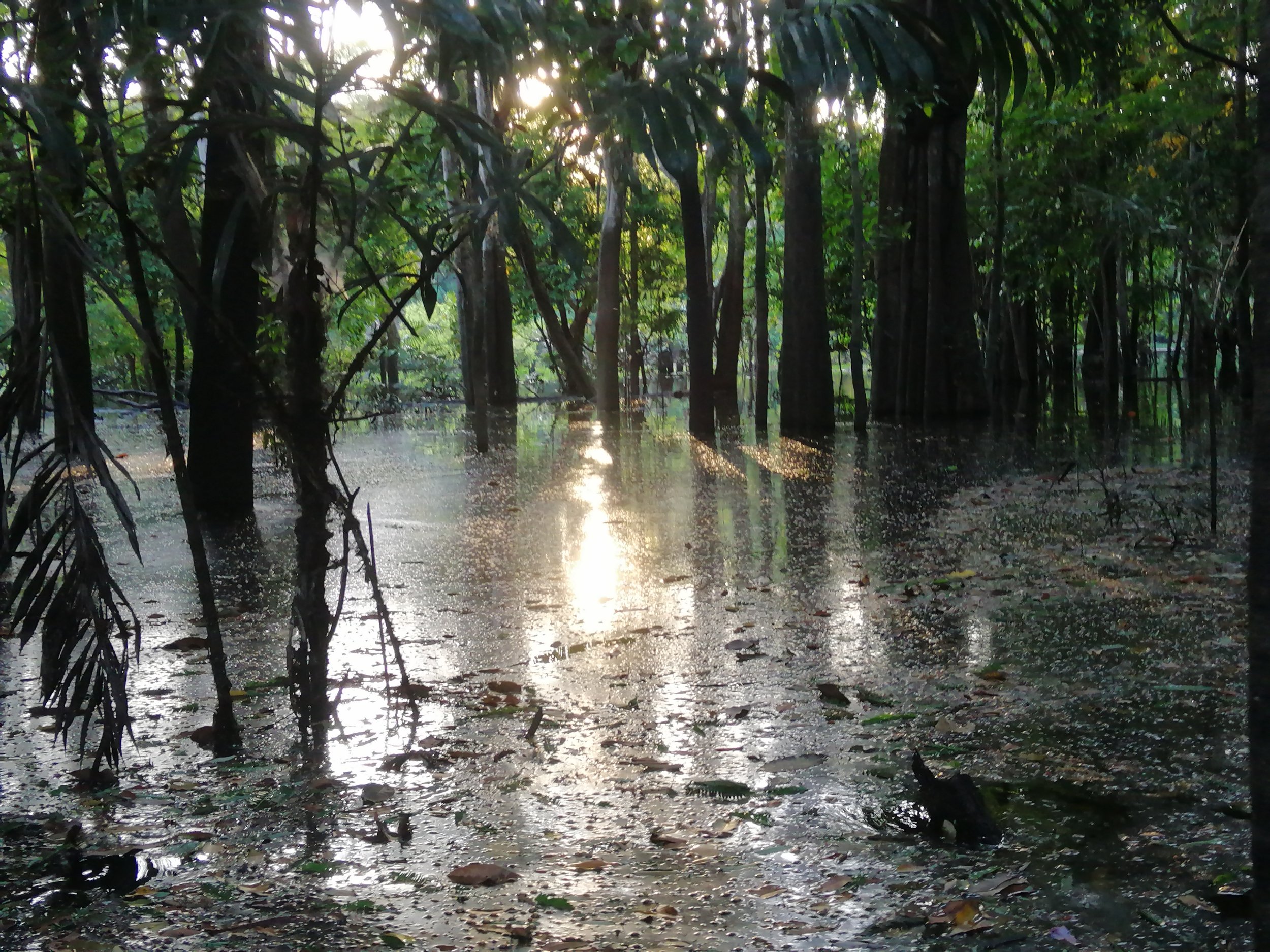
Flooded forest
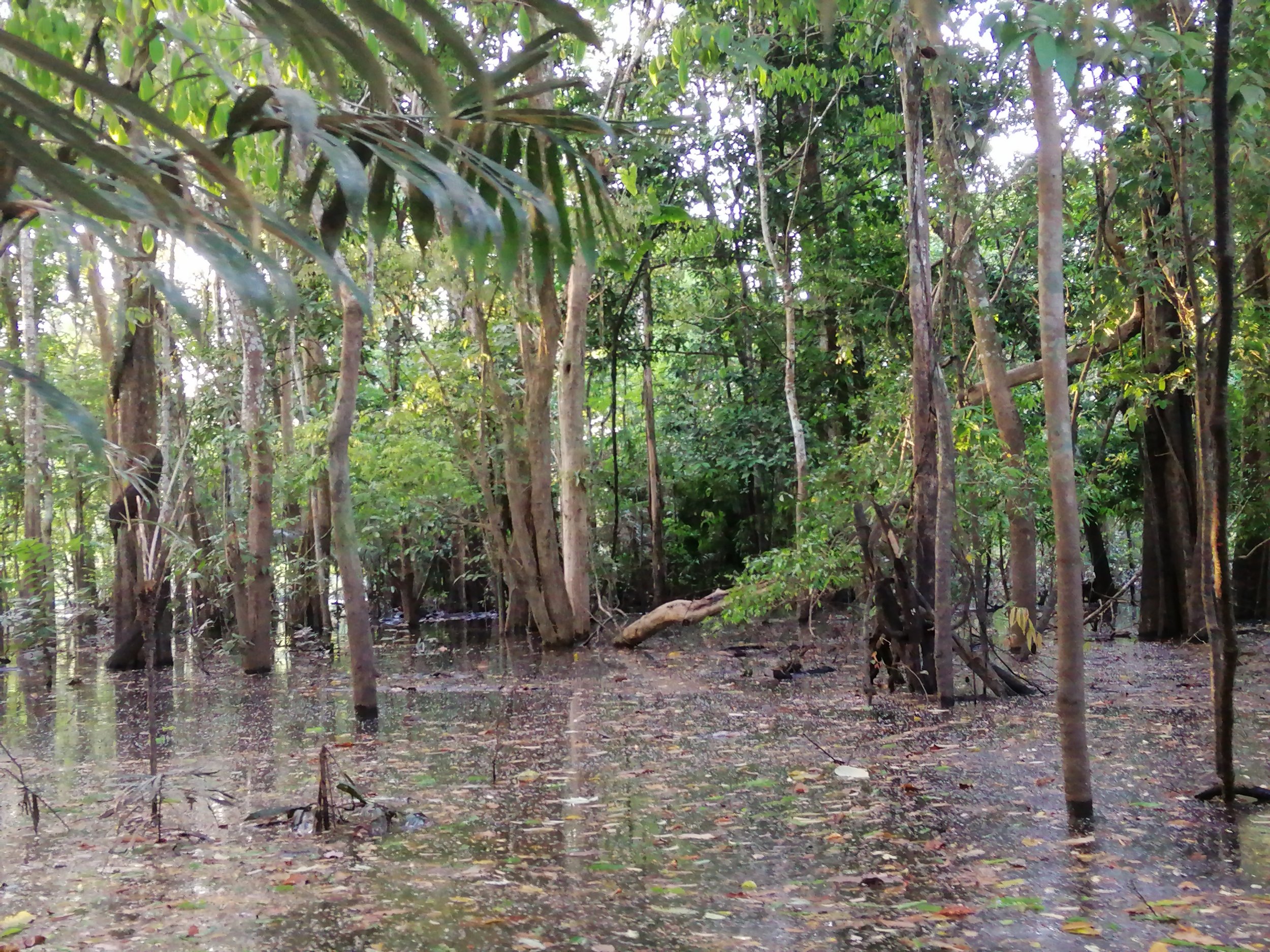

My home!
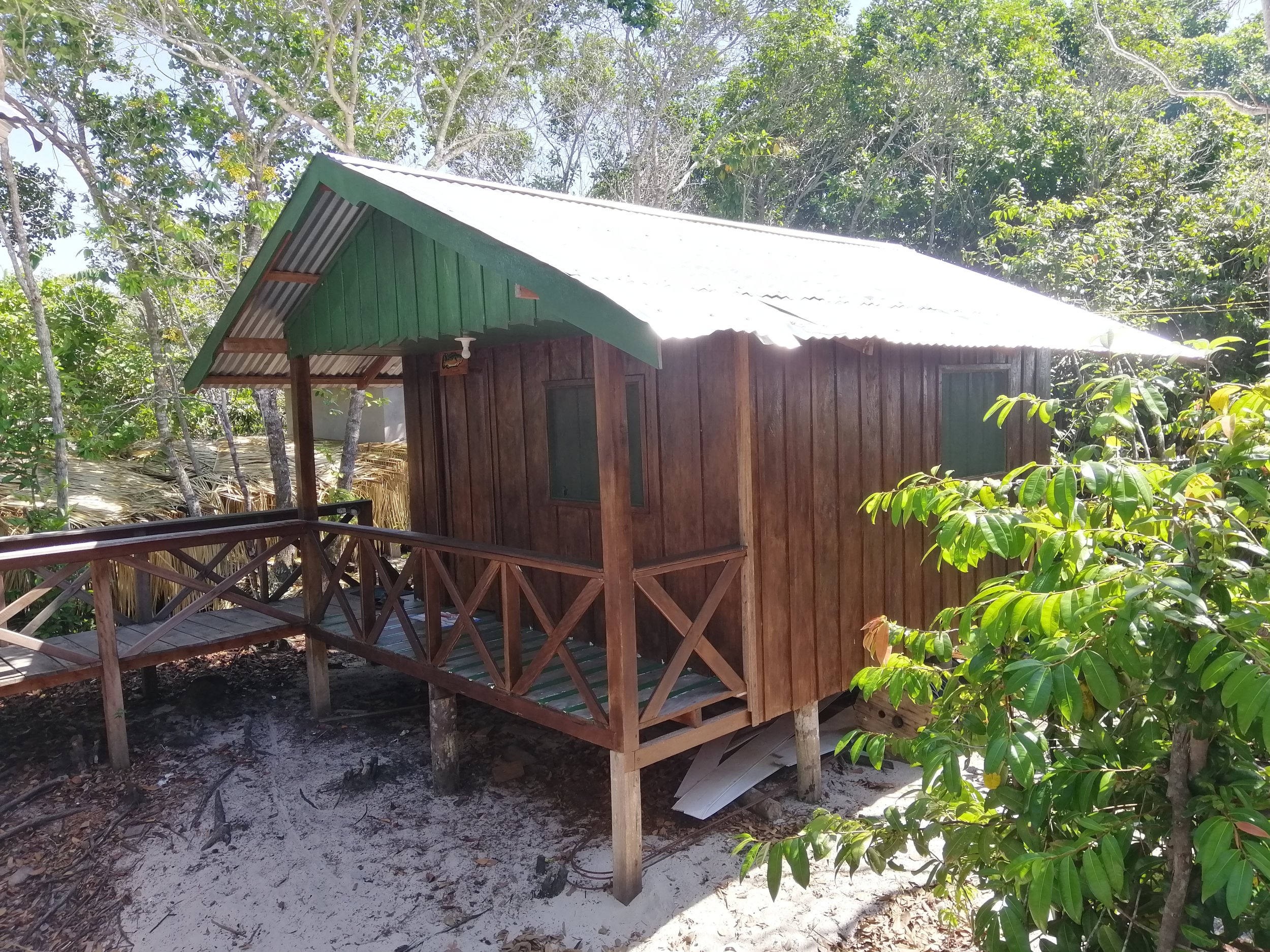
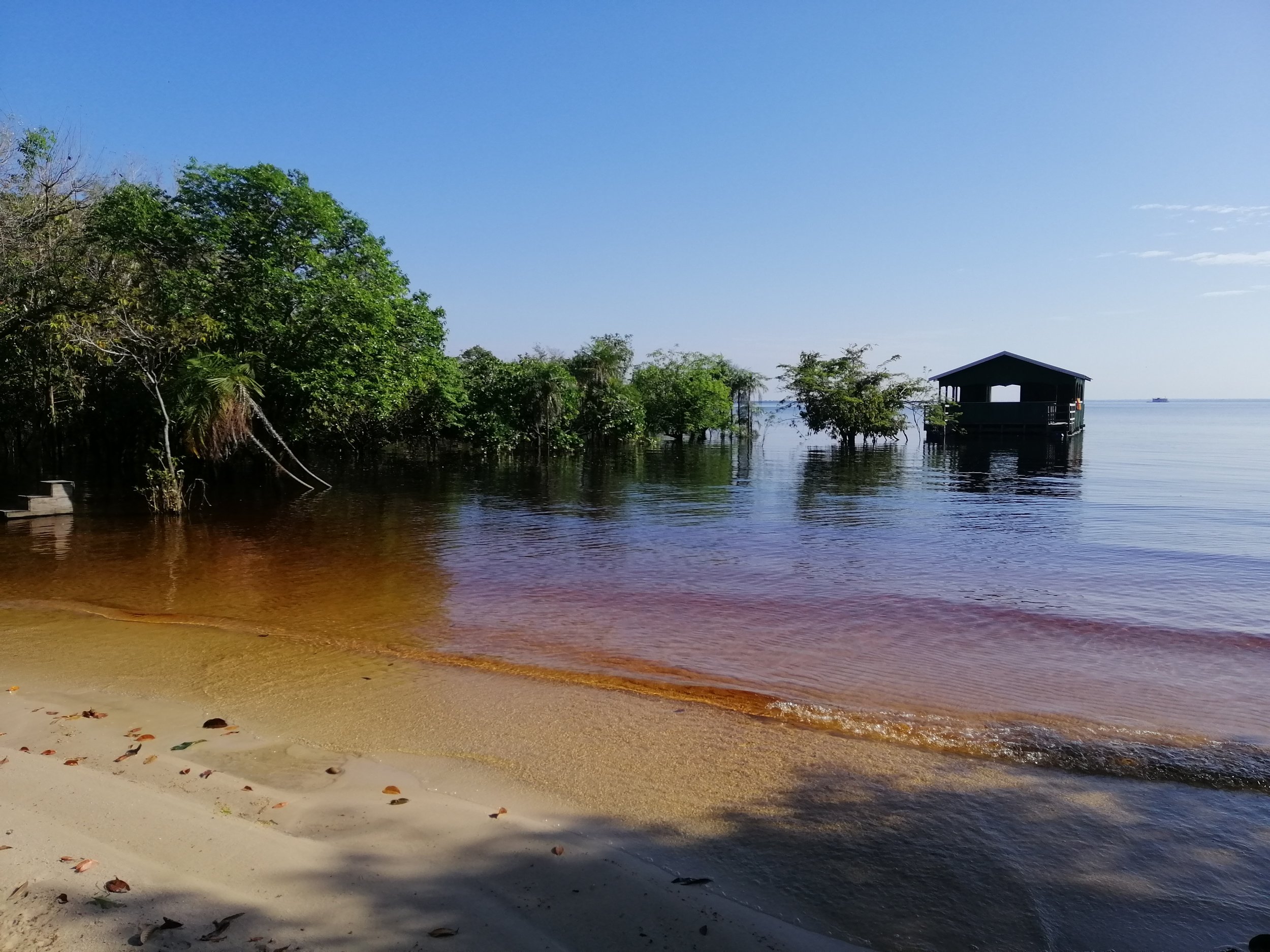
Note the turpene rich waters of the Rio Negro.
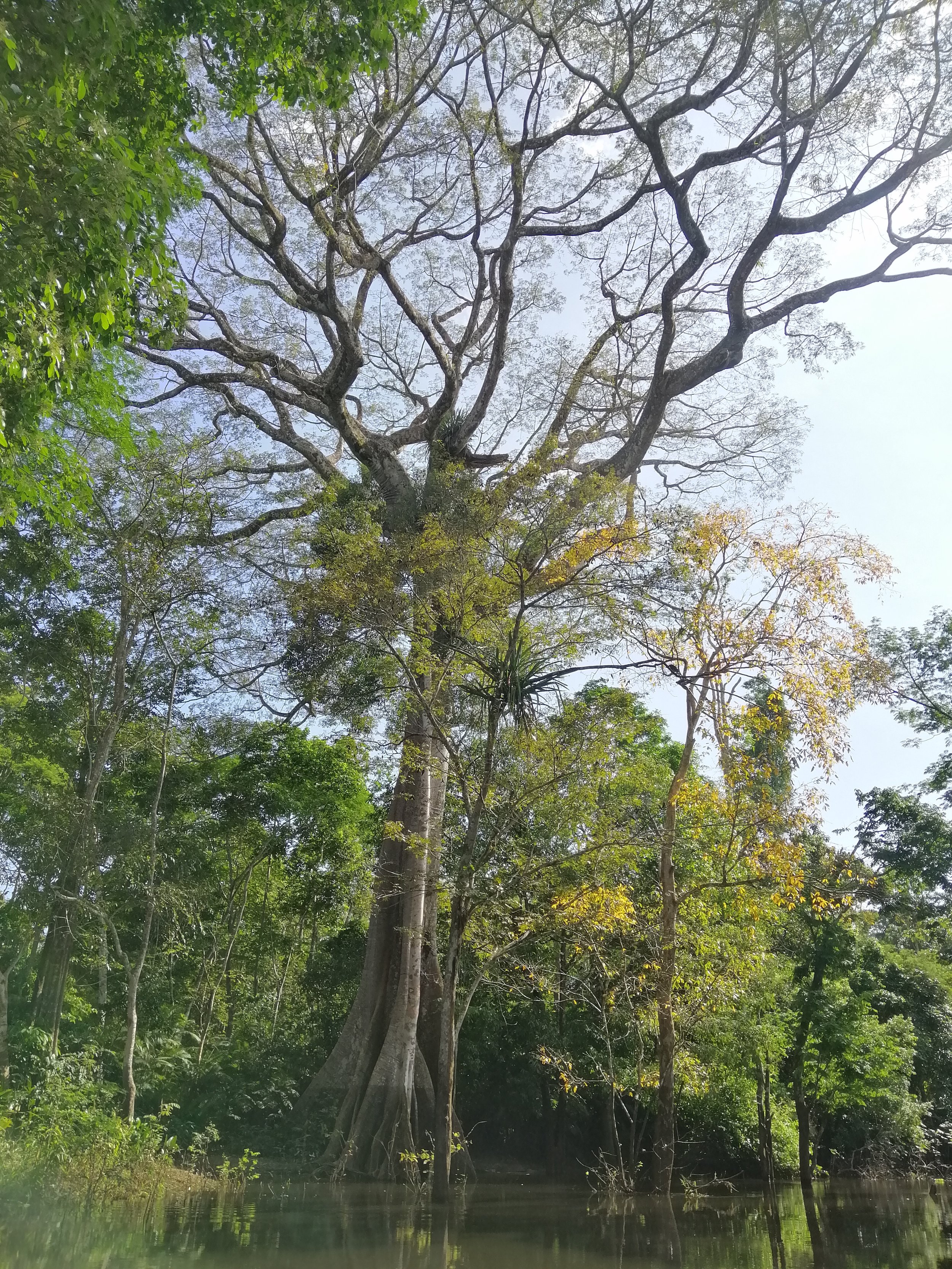
Rainforest giant in the Ariau.
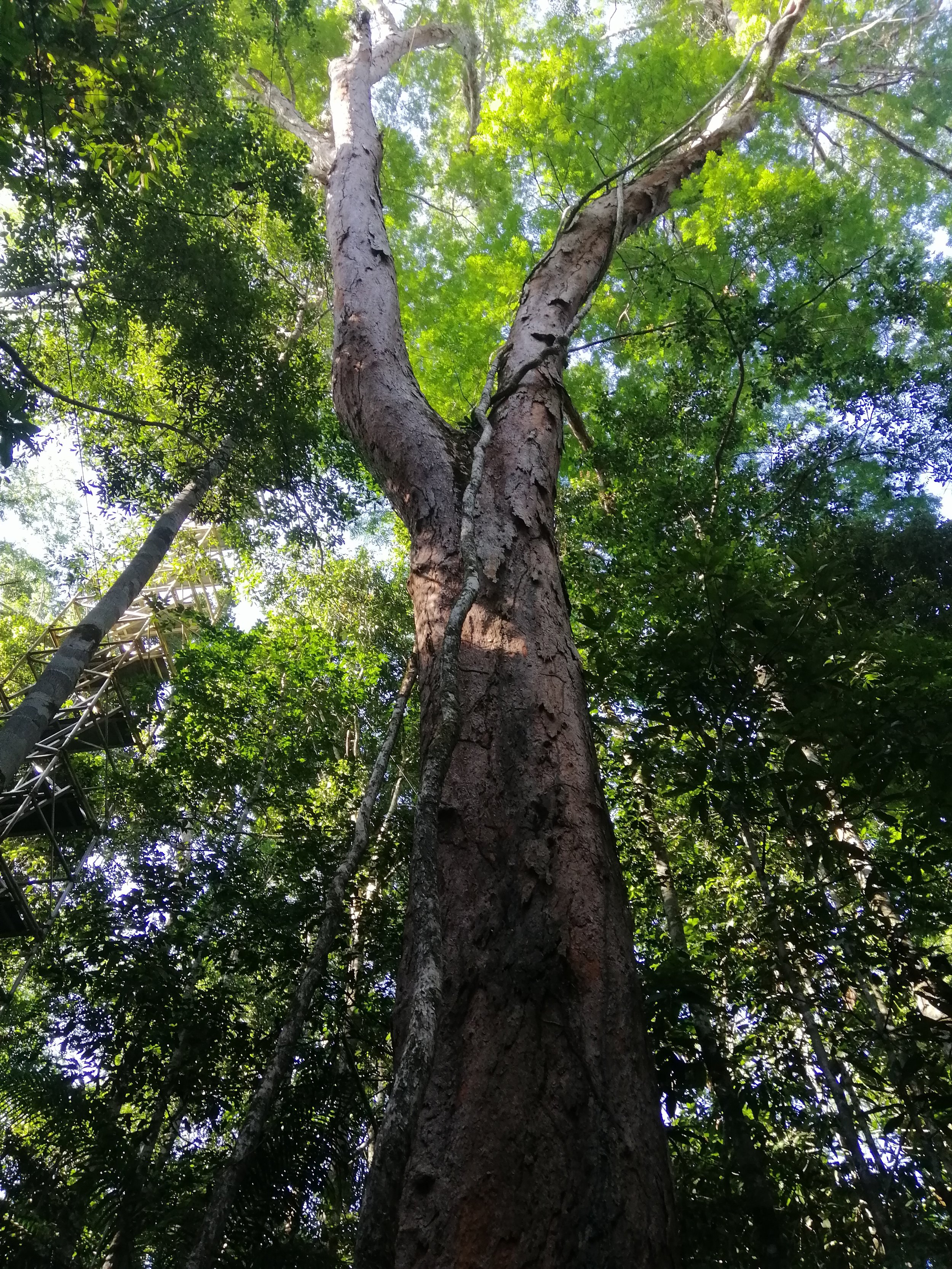
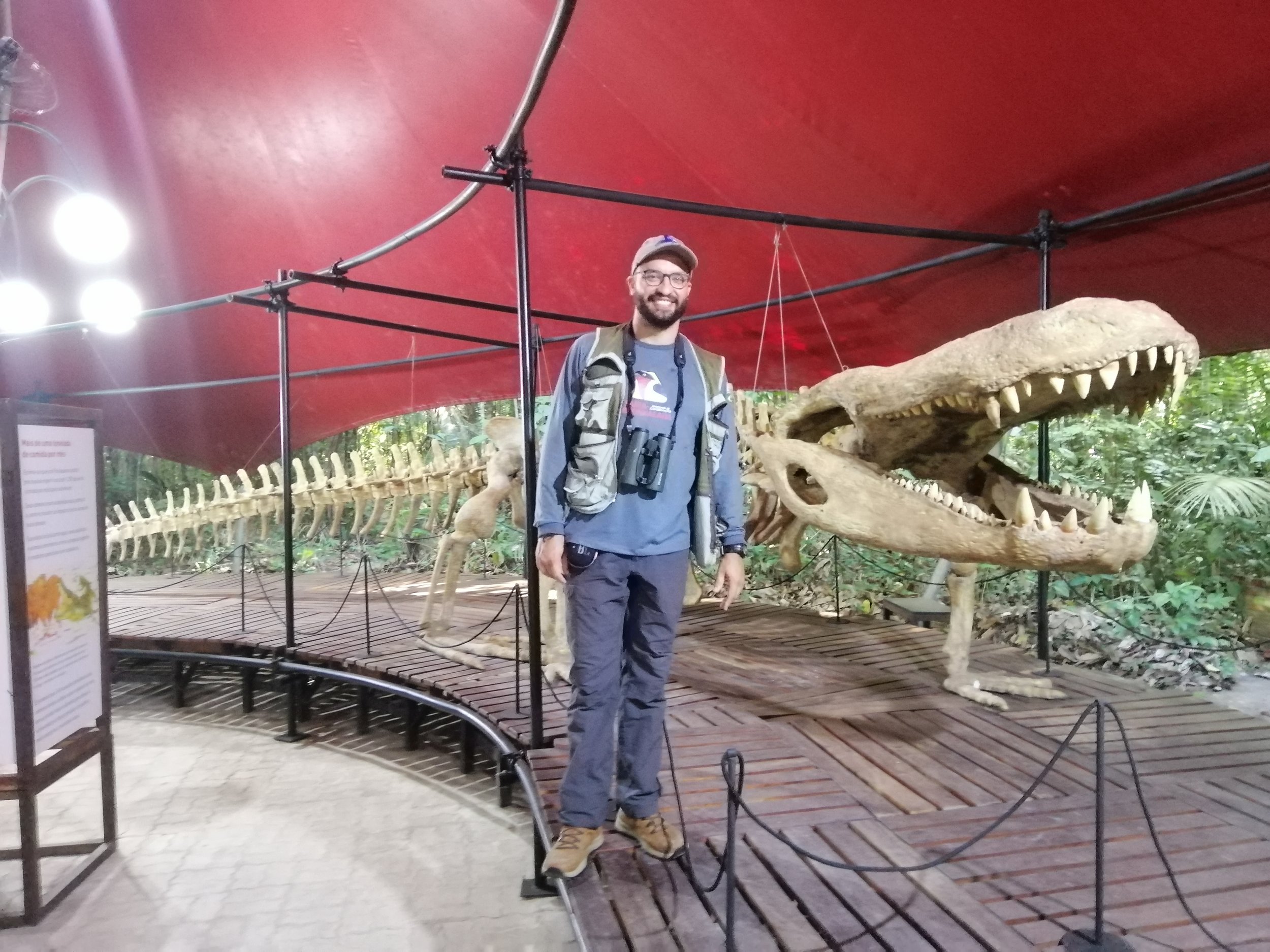
My local guide, Gabriel Leite, in Manaus and an extinct croc!
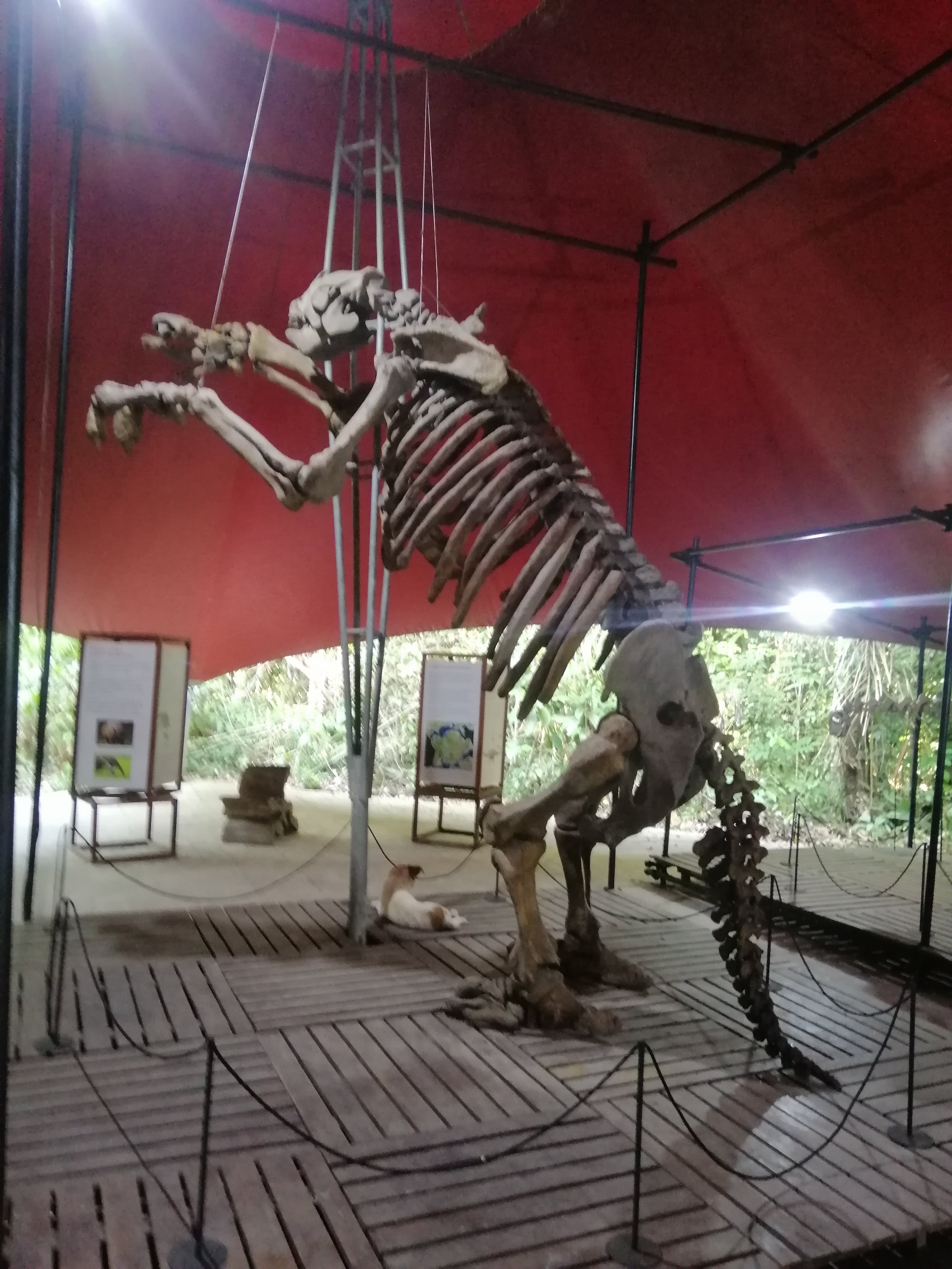
Ground Sloth!
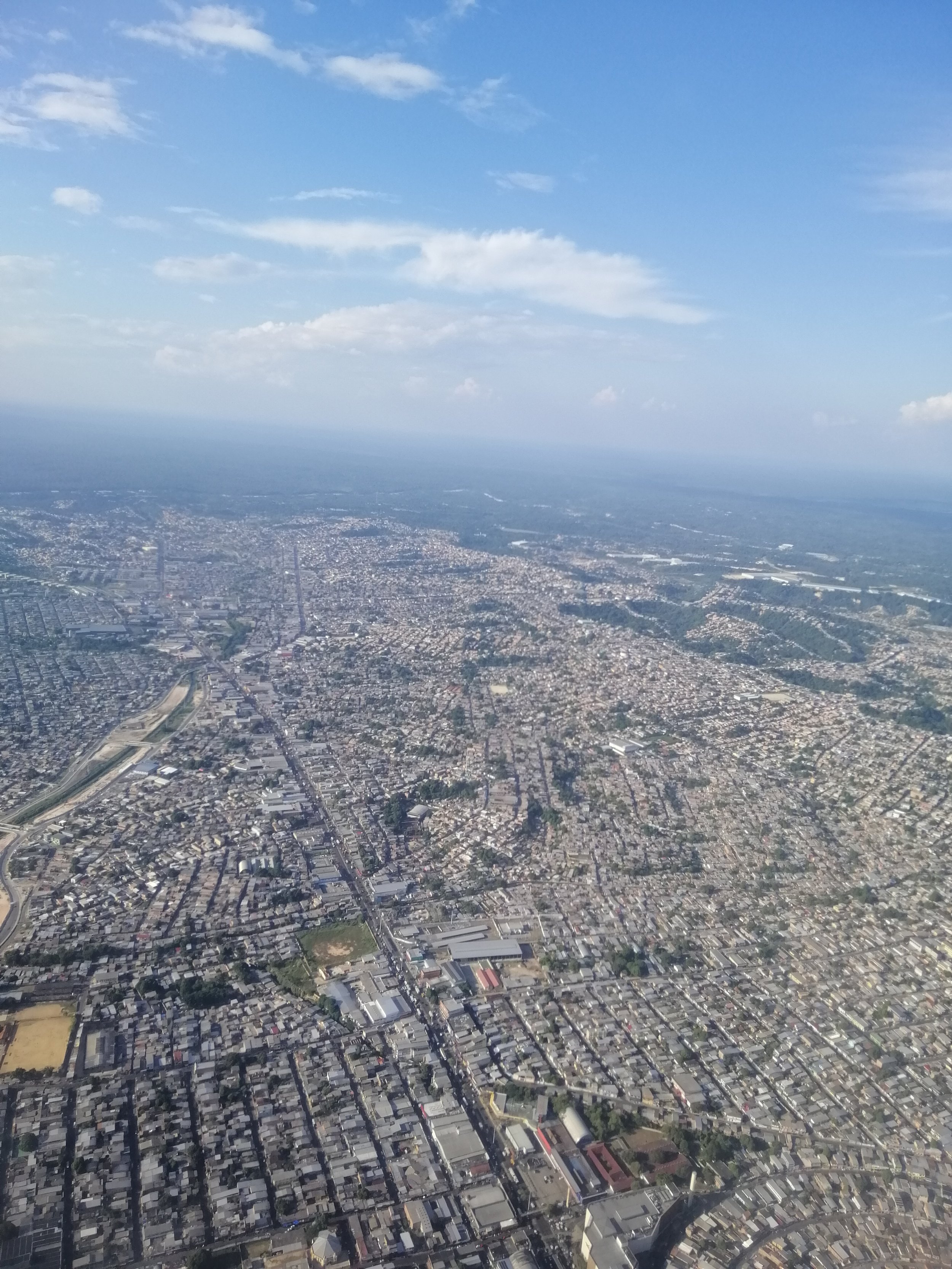
The megalopolis Manaus.
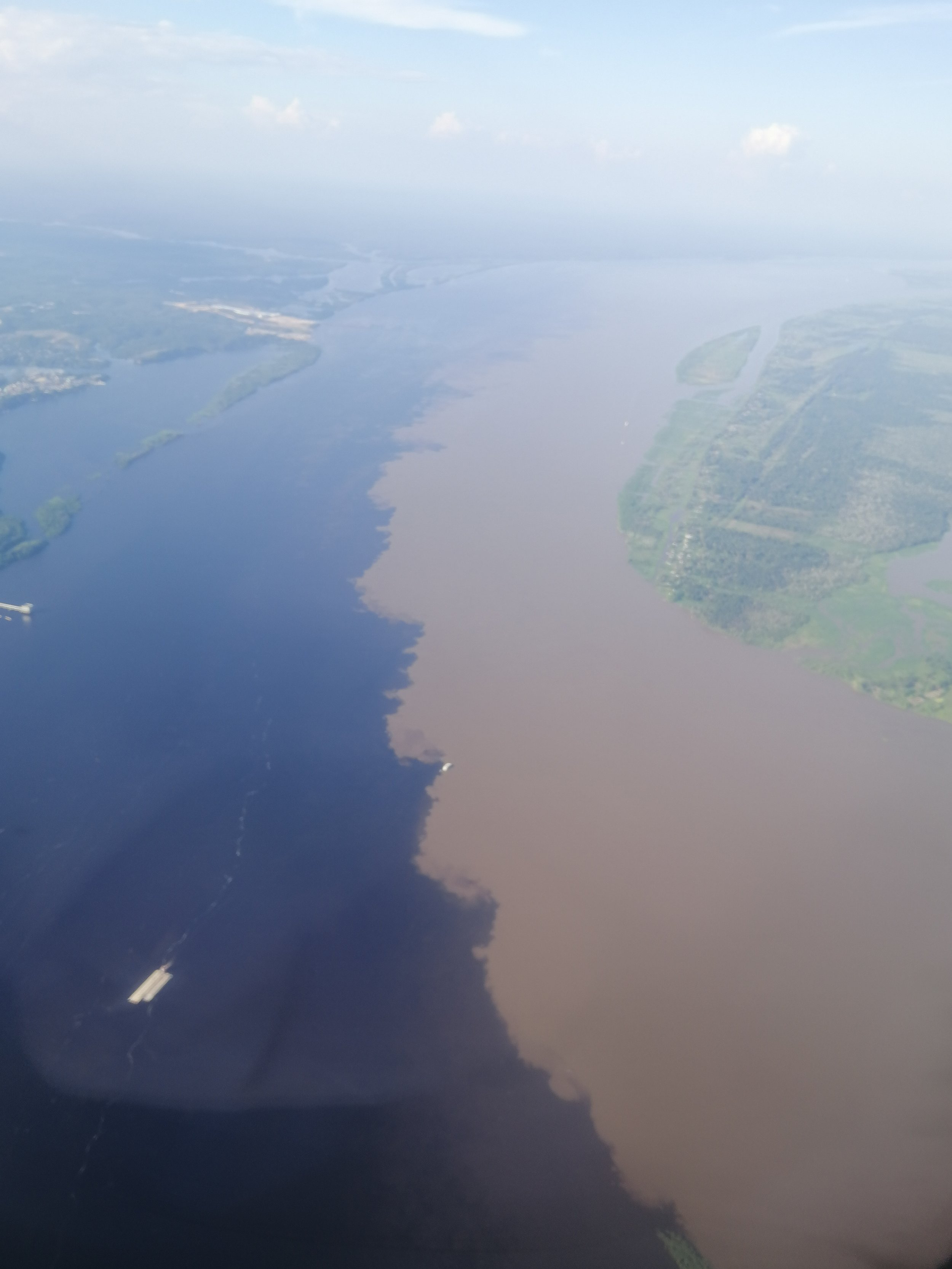
Fascinating convergence of the Negro River (left) and the Amazon River (right).

The Rio Negro Bridge - changing everything.
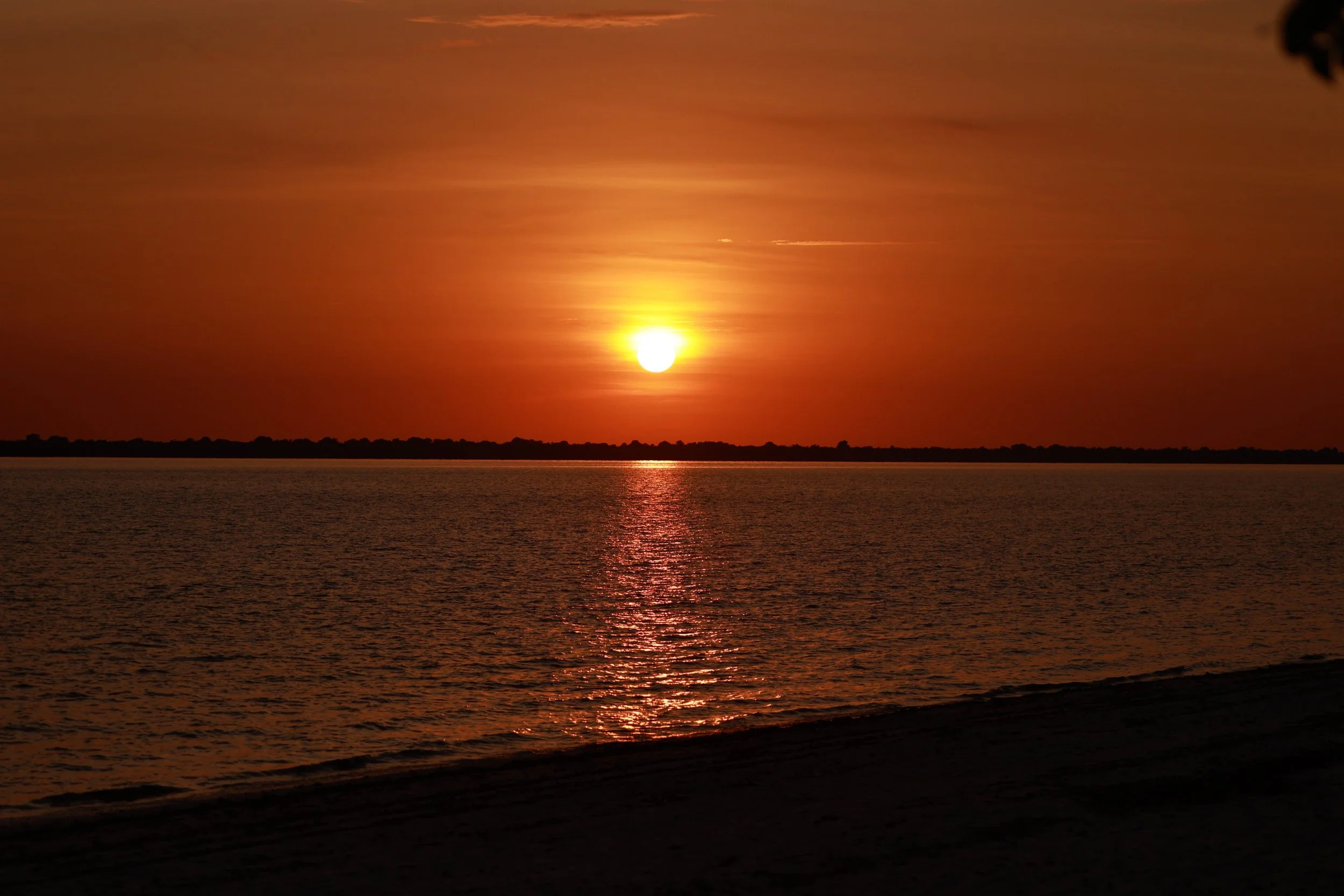
Glorious Rio Negro sunset.

Fresh caught river fish for dinner!
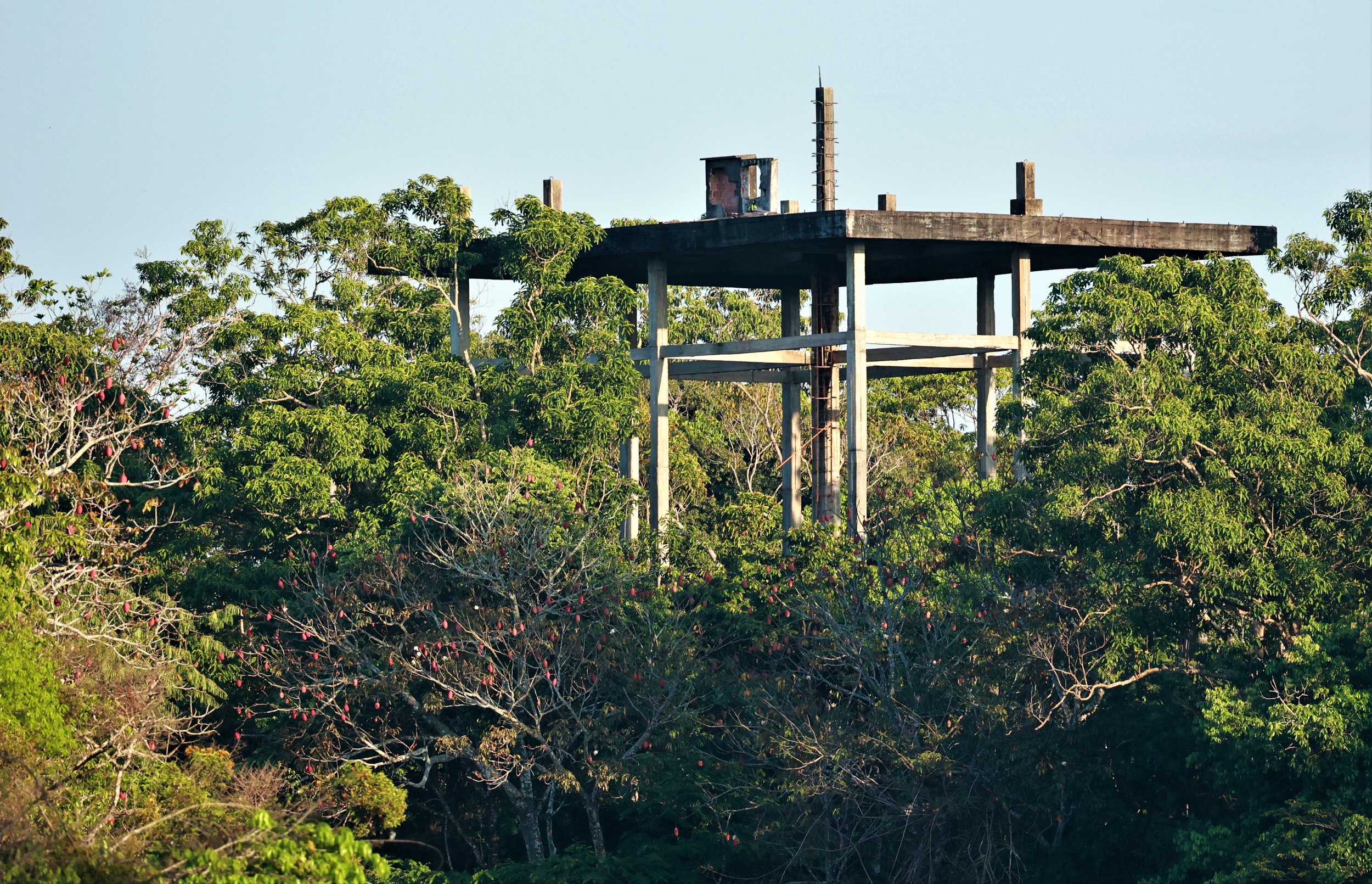
The massive ruins of the Ariau River Lodge, once the largest rainforest lodge on Earth.
No doubt the highlight of this river trip was admittedly a rather touristic experience but how often does one get to get so close to and even touch such an awesome cetacean as the Amazon River Dolphin. Evidently the location where is can be seen is permitted by the Brazilian government and has a fairly official set of tourist information available, so I felt ok visiting and participating. Watching what I think were five separate individuals frolic in the shallow waters of the homestead hoping for some free river fish was quite fun. Some of the individuals were quite large and one even took it upon himself to swim directly between my legs! I almost fell into the river with my camera!
My next morning was spent doing basically the same – investigating and exploring the flooded forests. While we added no new mammal lifers to my list, we did get some great views of more sloths and squirrel monkeys. Loads of birds as well.
Here are some useful links for this expedition
Amazon River Dolphins playing in the Rio Ariau
MUSA Tower
My final day in Manaus was spent climbing the MUSA Tower and exploring a bit in the gigantic forest tract that is preserved there. From the tower one is treated to spectacular views of the canopy of the primary Amazon Rainforest. Looking down on all the activity is a great perspective for observing species and behaviors one can never see from the forest floor. Watching the Scarlet Macaws course through the forests from emergent forest giant to another is awesome. And of course, listening to the various howler family groups wake and moan their horrific morning moans is something one will never forget. Only this species of howler was a new one – Guyanan Red Howlers are the species on this side of the giant rivers. Another lifer for this spot was the Brown Capuchin Monkey which were seen a distance from the tower.
Visiting Manaus and the nearby flooded Amazon forests was fantastic. Of course the short time there only made me wish for more time, and perhaps someday in the future I will do exactly that. This leg of the Great Primate Safari of 2023 was productive with new species and quality sightings and if one has only a few days in Manaus, this trip report will hopefully inspire people to branch out a bit and explore the surroundings of Manaus as well as the inner-city gardens and preserves as well.
Tufted or Brown Capuchin (Sapajus apella)
Golden-faced Saki (Pithecia chrysocephala)
Species List for Manaus & the Ariau River System
Order Primates
1. Alouatta macconnelli - Guyanan Red Howler, Manaus
2. Alouatta seniculus - Colombian Red Howler or Venezuelan Red Howler - Ariau River & Rio Negro Manaus
3. Saguinus bicolor - Pied Tamarin - Manaus
4. Saimiri cassiquiarensis - Humboldt's Squirrel Monkey - Ariau River & Rio Negro Manaus
5. Saimiri sciureus - Guianan Squirrel Monkey – Manaus
6. Sapajus apella - Tufted or Brown Capuchin – Manaus
7. Cebus albifrons – White-fronted Capuchin (no images)
8. Pithecia chrysocephala - Golden-faced Saki – Manaus
Order Pilosa – Anteaters
9. Tamandua tetradactyla nigra - Southern Tamadua - Ariau River & Rio Negro Manaus
10. Bradypus tridactylus - Pale-throated Sloth – Manaus
Order Cetacea – Whales
11. Inia geoffrensis - Amazon River Dolphin - Ariau River & Rio Negro Region Southwest of Manaus
Order Sirenia – Manatees
12. Trichechus inunguis - Amazonan Manatee – Manaus (CAPTIVE)
Order Rodentia
































